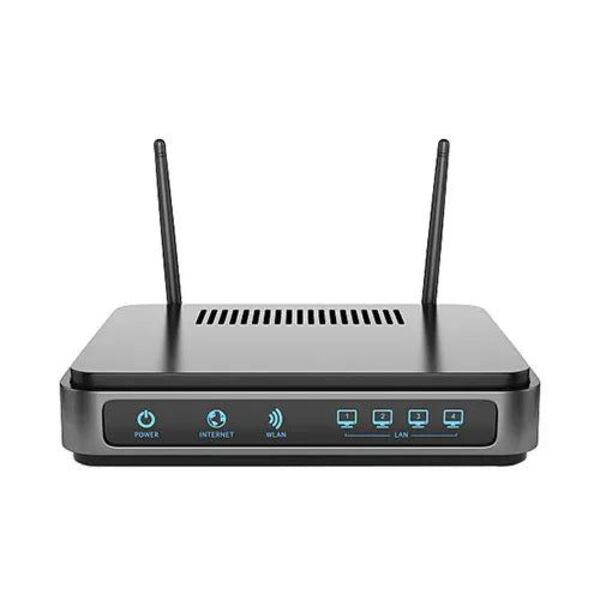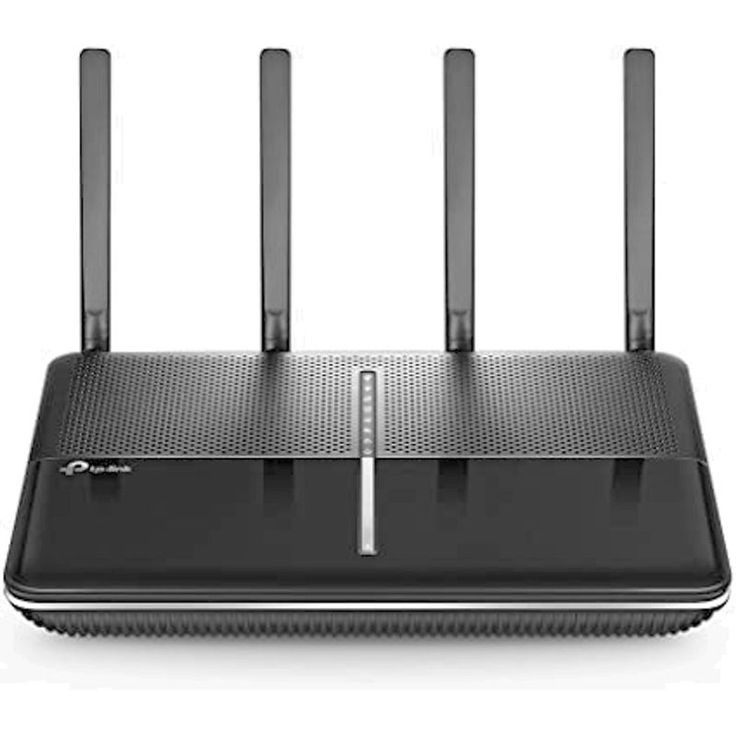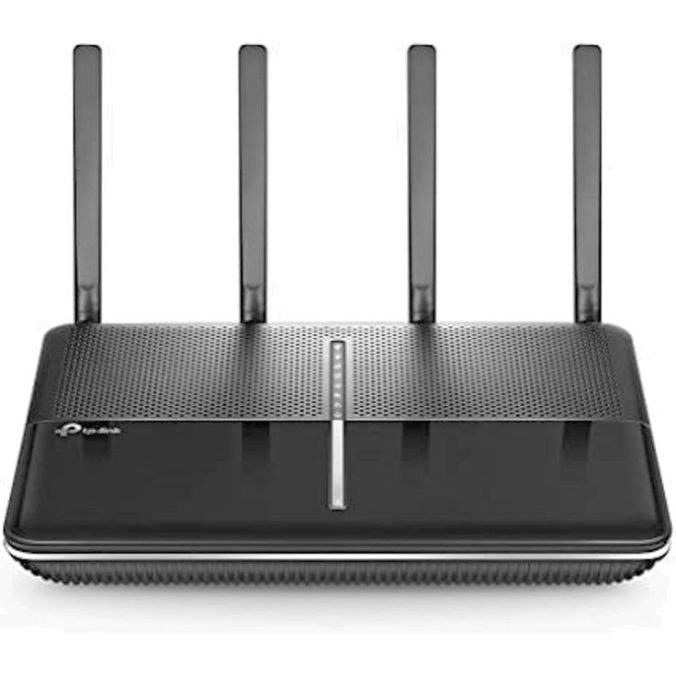Introduction to Cascaded Routers
Cascaded router refers to the process of connecting two or more routers together in a single network. This setup enhances your home network by expanding coverage, segmenting the network, and managing traffic more efficiently. Typically, one router acts as the main or ‘primary’ router, while the others serve as secondary units. A cascaded router configuration can either extend the existing network or create separate subnetworks within a home or office.

When implemented correctly, a cascaded router setup can offer multiple advantages. It can amplify signal strength in distant areas, provide dedicated bandwidth for different activities, and introduce new layers of network management. Moreover, it lays the groundwork for advanced networking features like port forwarding and static routing between subnetworks. To fully leverage the power of cascaded routers, understanding the proper setup and configuration is essential. This will involve identifying the right equipment, configuring IP addresses correctly, and defining clear network pathways. We will dive deeper into these steps in the subsequent sections of this guide.
Benefits of Cascading Your Routers
Cascading routers can significantly enhance your home network. This setup brings various benefits that cater to those seeking improved performance and better control over their network environment. Here, we will explore some of the key advantages of this configuration.
- Extended Wireless Coverage: Cascading allows you to increase the wireless coverage area. With more routers strategically placed, Wi-Fi dead zones in your home can disappear.
- Improved Network Performance: Individual routers can manage traffic more efficiently. This can result in faster speeds for connected devices.
- Increased Bandwidth Allocation: By segmenting your network, cascaded routers can provide dedicated bandwidth. This is useful for bandwidth-intensive tasks like gaming or video streaming.
- Advanced Network Features: In a cascaded router setup, you can enjoy features such as port forwarding or static routing. These options are crucial for advanced users interested in network customization.
- Enhanced Security: More routers mean more points of control. Each router can have its own security settings, allowing for granular security management.
- Guest Network Configuration: Cascading makes it easier to set up separate networks for guests. This ensures that your main network remains secure and uninterrupted.
- Cost Efficiency: Instead of purchasing expensive long-range routers, you can use existing routers to expand your network. This can be a more economical solution to boost your network’s reach and capacity.
By understanding these benefits, it’s clear that a cascaded router setup can be a great investment for anyone looking to upgrade their home network. It not only provides more network coverage but also enhances the overall user experience with improved performance and security. In the next sections, we will go over the essential equipment and step-by-step configuration to help you achieve a successful cascaded router system.
Equipment and Tools Needed for Cascading
To set up a cascaded router network, specific equipment and tools are necessary. These include:
- Two or More Compatible Routers: Ensure that all routers have cascading capabilities.
- Ethernet Cables: For connecting routers and devices directly.
- Network Switch (Optional): If you need more ports than your routers provide.
- Computer or Mobile Device: For accessing router settings.
- Router Manuals: Useful for specific configuration details.
- Internet Connection: To test the network once it’s set up.
Make sure that your primary router is capable of handling the role of the network hub. The secondary routers will need to support being configured either in bridging mode or as access points, depending on your cascading strategy.
Having the latest firmware for your routers can improve performance and compatibility. If necessary, update your router’s firmware before starting the cascading process.
Tools such as screwdrivers may be needed for mounting routers on walls. Labeling equipment with their IP addresses can help manage configurations more easily. With the right setup, cascading routers can transform your network’s reach and reliability.

Step-by-Step Configuration Process
Setting up a cascaded router network requires attention to detail to ensure everything functions correctly. Here is a straightforward guide to get you started:
Setting Up the Primary Router
The primary router is the central hub of your network. Follow these steps:
- Connect the Primary Router to the Internet: Use an Ethernet cable to link your primary router to the modem.
- Access the Router’s Web Interface: Open a web browser on your computer or mobile device and enter the router’s IP address.
- Configure Basic Settings: Set up the Wi-Fi name (SSID), password, and internet connection type.
- ** Update the Firmware**: Check for the latest firmware updates and install them.
- Note Down the IP Address Range: Document the DHCP IP address range for later reference.
- Disable DHCP (Optional): If you plan a LAN-to-LAN setup, you might need to disable DHCP on the secondary routers.
Configuring the Secondary Router
Integrating a secondary router involves these critical steps:
- Reset the Secondary Router: Ensure it’s on factory settings to start fresh.
- Connect to the Primary Router: Use an Ethernet cable to connect one of the primary router’s LAN ports to the secondary router’s LAN port for LAN-to-LAN configuration, or to its WAN port for LAN-to-WAN.
- Log In to the Secondary Router: Access its web interface using its default IP address.
- Assign a Static IP Address: Set a static IP within the primary’s subnet for LAN-to-LAN setup.
- Turn Off DHCP (LAN-to-LAN): Prevent IP conflicts by disabling DHCP on the secondary router.
- Match Wi-Fi Settings: For a seamless network, match the SSID and password to the primary router’s settings.
By following these configuration steps carefully and attentively, your cascaded router setup should provide the expanded coverage and enhanced performance that your home network needs.
Interconnecting Routers: LAN-to-LAN vs. LAN-to-WAN
When setting up cascaded routers, you need to choose between LAN-to-LAN and LAN-to-WAN configurations. Each approach serves a specific purpose and affects how your network operates. Let’s explore what each one entails and when to use them.
LAN-to-LAN Configuration
In a LAN-to-LAN setup, you connect the secondary router to a LAN port of the primary router. This method is ideal for expanding the coverage of your existing network without creating a separate network. Here are the key points:
- This configuration keeps all devices on the same network.
- It allows devices connected to different routers to communicate easily.
- The secondary router should have DHCP disabled to avoid conflicts, as the primary router handles IP addresses.
- It’s suited for larger homes or spaces needing wider Wi-Fi coverage.
LAN-to-WAN Configuration
In contrast, LAN-to-WAN links the secondary router’s WAN port to a LAN port of the primary router. This setup creates a distinct subnet, ideal for separating network traffic. Here’s what you need to know:
- It segments the network, which can enhance security and performance.
- Each router manages its own DHCP, resulting in separate IP address ranges.
- It is useful for guest networks or separating work and personal devices.
- This setup requires adjusting firewall and port forwarding settings for inter-router communication.
Your choice between LAN-to-LAN and LAN-to-WAN cascaded router configurations will depend on your specific network needs. If you simply want to extend your network’s reach, LAN-to-LAN is usually the way to go. However, for more advanced network segmentation, LAN-to-WAN might be the better option. Whichever you choose, ensure that you configure the settings correctly to make the most of your cascaded router setup.

Addressing Potential Network Issues
A cascaded router network, while beneficial, can encounter issues that diminish its efficiency. Recognizing and addressing these problems early is vital for a stable and high-performing network. Here are some potential issues you might face and how to resolve them:
- IP Address Conflicts: Make sure each router has a unique IP address to avoid conflicts.
- Weak Signal Strength: Position routers to ensure strong signal coverage throughout. Use repeaters if necessary.
- Uneven Bandwidth Distribution: Adjust quality of service (QoS) settings to prioritize important traffic.
- Double NAT Issues: For LAN-to-WAN setups, configure the secondary router’s NAT settings to avoid networking complexities.
- Firmware Incompatibility: Regularly update your routers’ firmware to the latest version for optimal performance.
- Device Connectivity Problems: Sometimes devices may struggle to switch between routers smoothly. Set matching SSID and passwords to facilitate easier roaming.
By troubleshooting these common issues, you can enjoy the seamless operation of your cascaded router network. Always test your setup after making changes to ensure all devices connect and communicate effectively.
Securing Your Cascaded Router Network
After successfully setting up a cascaded router network, securing it is paramount. A secure network not only protects your sensitive information but also ensures that your network’s performance remains unimpeded by malicious entities. Here’s how to safeguard your cascaded router network:
- Change Default Credentials: Replace all factory-set passwords with strong, unique passwords. Do this for both the primary and secondary routers.
- Update Firmware Regularly: Vendors often release updates that address security vulnerabilities. Keep your routers’ firmware up to date to protect against threats.
- Enable Network Encryption: Use WPA2 or WPA3 encryption to secure your Wi-Fi network. Encryption is a must to prevent unauthorized access.
- Install Firewalls: Ensure both primary and secondary routers have firewalls activated. This will help block unwanted traffic from entering your network.
- Limit Network Access: Minimize risks by restricting access to your network. Use MAC address filtering to control which devices can connect.
- Guest Network Isolation: For guests, provide a separate Wi-Fi network. This prevents access to your main network’s resources and isolates traffic.
- Periodic Security Audits: Regularly check your network for any unauthorized devices or access points. This helps spot potential breaches early.
By implementing these security measures, you can create a robust defense against most cybersecurity threats. Secure routers form a strong foundation for your home’s or office’s digital safety.
Troubleshooting Common Setup Problems
Even with careful setup, you might encounter issues while configuring a cascaded router network. Identifying these problems quickly and knowing how to resolve them can save you time and frustration. Here are some common setup problems and their solutions:
IP Configuration Errors
Incorrect IP settings can cause network disruptions. Ensure the following:
- Each router has a unique IP address.
- Subnets are correctly assigned for LAN-to-WAN setups.
- Static IP addresses do not clash with DHCP ranges.
Connectivity Issues
Sometimes, devices may lose connection to the network. To fix this:
- Check all physical connections between routers.
- Restart the routers to refresh network settings.
- Confirm Wi-Fi settings match across all routers, if intended.
Slow Internet Speeds
A cascaded network should not slow down your internet. If it does:
- Test your internet speed directly from the modem.
- Limit devices or applications using high bandwidth.
- Use QoS settings to manage traffic better.
Difficulty Accessing Router Settings
Accessing router settings is crucial. If you’re having trouble:
- Use a wired connection to ensure stability while configuring settings.
- Verify you’re entering the correct IP address for each router.
- Reset your router to factory settings as a last resort.
Wireless Signal Overlap
Overlapping Wi-Fi signals may reduce performance. Avoid this by:
- Changing channels on each router to minimize interference.
- Spacing routers apart to cover different areas effectively.
Firmware Issues
Outdated firmware may cause instability. Make sure to:
- Update all routers to the latest firmware version available.
- Check the manufacturer’s website for updates and instructions.
By addressing these common problems, your cascaded router network should run smoothly, enhancing your home’s or office’s connectivity. Remember to apply the cascaded router keyword appropriately, ensuring a smooth reading experience for your audience.

Leave a Reply